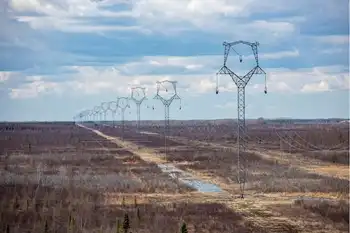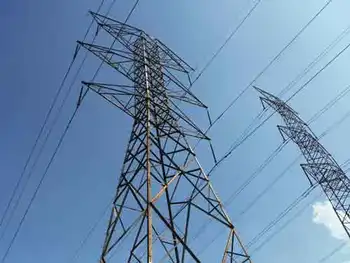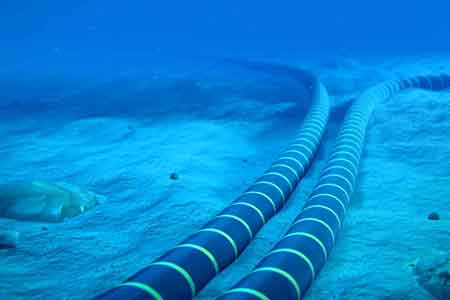IAEA reports it is less able to monitor Tehran
By NewsDay.com
Substation Relay Protection Training
Our customized live online or in‑person group training can be delivered to your staff at your location.

- Live Online
- 12 hours Instructor-led
- Group Training Available
As two U.S. aircraft carriers and a flotilla of warships steamed into the Persian Gulf for previously unannounced exercises off Iranian shores, the United Nations' nuclear watchdog agency warned that it could not "provide assurances aboutÂ… the exclusively peaceful nature" of Tehran's expanding nuclear effort.
Iran has started low-level operation of 1,312 centrifuges, which are used to enrich uranium, and has begun testing or is constructing 820 additional centrifuges, in a vast underground chamber at the country's main nuclear facility at Natanz, the report by the Vienna-based IAEA said. The total is more than three times as many centrifuges as Iran had at the facility three months ago.
"What they are doing now is significant," said a senior U.N. official who spoke on condition that he not be identified because the report officially goes to the U.N. Security Council before it may be released. "Their progress is accelerating."
Iran's continued refusal to comply with Security Council demands for an immediate freeze of its nuclear program is likely to spur another round of U.N. economic sanctions, the third set since December. U.S. diplomats and their allies began preparing proposals for stiffer penalties in anticipation of a negative report.
Iran's representative to the IAEA, Ali Asghar Soltanieh, disputed portions of the report and said in a telephone interview that Tehran had provided "full cooperation and full transparency" to the U.N. inspectors.
As Iranian officials have in the past, Soltanieh insisted that Tehran's nuclear program would produce only electricity, not, as the West fears, nuclear weapons.
The centrifuges can be used to provide low enriched fuel for civilian reactors, or they can produce the more highly enriched uranium used for nuclear weapons.
"We have continued our activities because this is our inalienable right," the Iranian envoy said. Additional U.N. sanctions, he warned, would "have a negative consequence." He declined to elaborate.
The Bush administration, which has sought to rein in Iran's nuclear program through diplomacy and sanctions, reacted sharply to the latest IAEA report.
"Iran is thumbing its nose at the international community," Undersecretary of State R. Nicholas Burns told reporters in Washington. "We are not going to agree to accept limited enrichment, to accept that 1,300 centrifuges can continue spinning at their plant at Natanz."
Zalmay Khalilzad, the U.S. ambassador to the United Nations, said in New York that "the time has come to take a look at additional pressure, to ratchet up the pressure to bring about a change in Iranian calculations."
Khalilzad said the U.S. was willing to negotiate directly with Iran to safeguard a civilian nuclear program once Tehran suspended its current enrichment effort, as the Security Council has demanded. Iran has insisted it will not freeze its operations as a precondition for talks.
Khalilzad dealt directly with Iranian counterparts in recent years when he served as ambassador to Afghanistan and Iraq, but not on the nuclear issue. He said he did not have instructions to talk informally with the Iranian ambassador to the U.N., Javad Zarif, his partner in previous talks.
Meanwhile, the U.S. Navy began the major, previously unscheduled exercise in the Persian Gulf — one of the largest shows of military force in the region's seas since the 2003 American-led invasion of Iraq.
Navy officials said the air and sea maneuvers were not designed to increase diplomatic pressure on Iran. They said the training mission was being conducted because three battle groups happened to be nearby at the same time.
"It's not a chest-thumping thing," an official said. "It's a target of opportunity."
The Pentagon this year decided to send a second aircraft carrier group to the gulf as part of what senior Defense Department officials acknowledged was an attempt to show that the U.S. could project force in the Middle East even as it was bogged down in Iraq. The two carrier groups currently in the gulf are led by the John C. Stennis and the Nimitz.
The arrival of the third battle group, a flotilla that includes an attack submarine and five large surface ships led by the amphibious assault ship Bonhomme Richard, prompted the commander of the Navy's 5th Fleet, based in Bahrain, to begin the joint exercise, officials said.
The drill will include mine warfare maneuvers. Iran is believed to be developing the capability to mine portions of the gulf in the event of war, and any mining or military action could cause a sharp spike in the price of oil and affect the global economy.











